Managing Disc Herniation and Alleviating Sciatica: Tips and Tricks 1
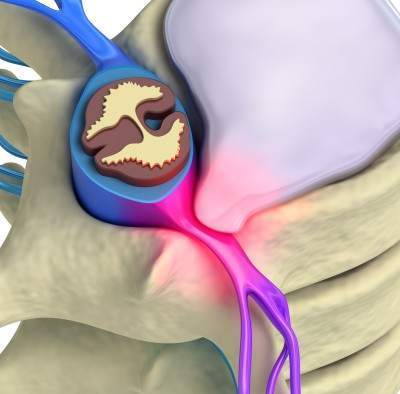
Suffering from disc herniation? Experiencing sharp pains shooting through your buttock, thigh, and leg due to sciatica? If your daily routine is disrupted by the discomfort of disc herniation, there’s hope. Many people find relief without needing surgery. This post will guide you through lifestyle changes to support your recovery from disc herniation. Stay tuned for our next piece, where we’ll explore exercises to correct and stabilize your condition.
Ultimate Guide To Exercises For Lumbar Disc Herniation Relief
Mary’s Story: A Wake-Up Call
Imagine starting your day like any other, performing your routine toe touches, when suddenly you’re hit with an excruciating pain radiating from your lower back down to your toes. This was Mary’s reality when she encountered a lumbar disc herniation, commonly referred to as a slipped or ruptured disc. Such incidents can lead to what’s known as sciatica or radiculopathy, terms doctors use to describe the pain that extends down your leg.
Understanding Lumbar Disc Herniation:
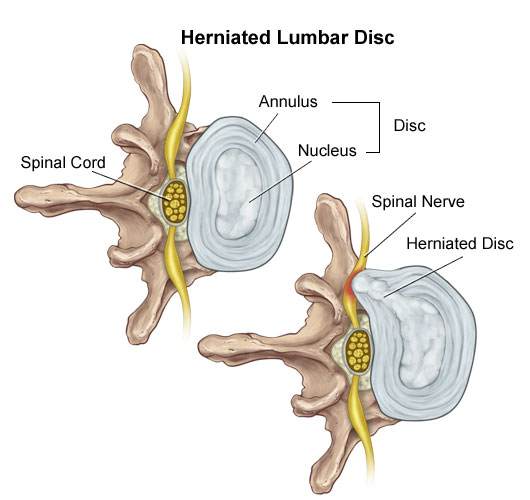
A glimpse into the anatomy of a herniated disc reveals two main components: the tough outer annulus and the softer, inner nucleus. Dr. Stuart McGill likens the nucleus to sticky phlegm. When Mary bent forward, it was akin to squeezing the front of a jelly doughnut, pushing the inner material backwards and eventually causing the disc to bulge and press on a nerve.
The Culprit Behind the Pain:
Mary’s disc herniation wasn’t a sudden mishap but the result of years of repetitive motions like toe touching and prolonged slouching at her desk. These habits gradually weakened her disc, leading to the moment when it finally herniated and impacted her nerve. The lack of nerves within the disc itself means significant damage can occur without immediate pain, explaining why the problem might not be felt until it’s severe.
A Lesson Learned:
The story underscores the importance of posture and the dangers of neglecting spinal health. While the advice to “sit up straight” might seem simplistic, maintaining the natural curve of your back is crucial. Mary’s experience serves as a potent reminder of the long-term consequences of poor posture.
Disc herniations don’t have to dictate your life. By understanding the causes and adopting preventive measures, you can manage and alleviate your symptoms.
Understanding Disc Herniation: Pain, Prevention, and Care
The Unseen Progression of Disc Herniation (see picture above)
- Bulging Disc: Early stages where the disc starts to protrude due to wear and tear.
- Prolapsed Disc: The disc bulges more as it degenerates, but the nucleus remains contained.
- Extruded Disc: The protective layers give way, pressing on nerves and causing pain.
- Sequestrated Disc: The most severe stage, where disc fragments break away, potentially compressing nerves or the spinal cord.
See Also: MRI, CT scan and X-rays: Is an MRI, CT Scan or X-ray Best For My Pain?
Why Me? The Role of Movement and Genetics in Disc Herniations
Surprisingly, your daily habits and genetic makeup play pivotal roles in disc health. While we can’t choose our genetics, modifying daily movements can significantly reduce the risk of herniation. Proper lifting techniques and posture adjustments are crucial first steps.
Simple Changes, Major Impacts: Daily Habits and Exercise
To protect your spine:
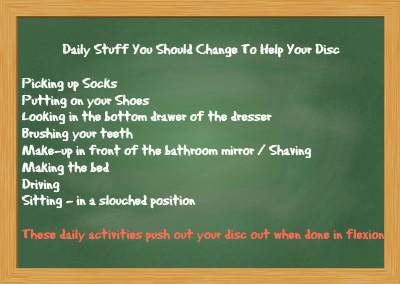
- Adjust Daily Habits: Learn to perform everyday activities in spine-friendly ways to prevent further disc damage.
- Disc-Specific Exercises: Exercises can help reposition the herniated disc.
- Stabilization Routines: Strengthening your core helps maintain spinal integrity, preventing future herniations.
Lifting Techniques: How Weight Lifters Should Lift
Master the Basic Butt-Lifting Technique for Disc Health
- Practice with a long, straight object to ensure your back remains aligned.
- Ensure it touches your butt, mid-back, and the back of your head during the entire motion.
- Squat down and maintain contact with 3 areas and keep the lower back arched the whole time.
- Aim for 30 repetitions to embed this healthy habit into your daily routine for 10 days
Daily Activity Guide: Protecting Your Discs
Then you integrate this lifting technique into everyday life. Initially, whenever you do any of these activities, use the same basic move and you will stop pushing out your disc.
In the beginning, you will need to be conscious each time you are doing any of these activities. To speed things up you can practice each activity like picking up your socks 30 times using the butt lifting technique and it will become even more automatic. You can deepen muscle memory during all of these activities.
For sitting in a chair and driving I recommend that you roll up a Mckenzie Lumbar support roll and put that in the arch of your lower back
Guide for disc herniation daily activities.
- Remember to do all these movements pain-free. Always stop whenever you run into pain with any movement of the spine.
- Disc herniations are linked with long periods of sitting, especially prolonged driving.
- Disc herniations are caused by repeated flexion.
- Prolonged trunk flexion or twisted or bend sideways cause disc herniations.
- Too much lifting, pushing/pulling causes disc herniations
- Vibration while sitting is linked to disc herniations.
- After prolonged stooping or sitting, you should stand. For example, a gardener lifting bags of peat moss after having a prolonged period of rounded lower back, or a driver getting heavy loads out of the trunk after a long drive is not recommended. You should remember to stand for a few minutes before attempting to lift. Studies have shown that ½ hour is even better.
Here are some more exercises that can cause disc herniation.
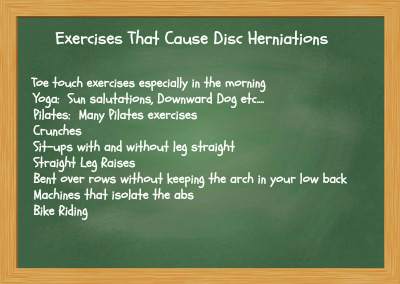
Activities That Put Out Lumbar Disc Herniations
Yes, it’s very surprising that toe touches, Yoga and certain Pilates can cause disc pressure leading to disc herniations. I have personally treated dozens of Yoga teachers with varying degrees of experience. The fact is some of the exercises involved in Yoga are great for helping disc herniations while others directly push the disc out.
Many Yoga Exercises Put Out Disc Herniations
I know many Yogis who have had to stop many of their exercises due to the pain it cause them in various parts of the body, including their disc.
Next week’s article will go over the second and third ways to help your disc. Remember, you need to do #1 “Daily Disc Activities Correctly” first so that your disc doesn’t keep getting aggravated. Then you can move on to next week’s article which goes over #2 Disc Exercises to Push the Disc Back In and #3 Stabilization Exercises help by keeping the disc from coming out by normalizing how your spine moves.
Looking Ahead: Comprehensive Care for Disc Health
Next week, we delve deeper into specific exercises for disc realignment and stabilization techniques, in this article called Ultimate Guide To Exercises For Lumbar Disc Herniation Relief. Remember, starting with correct daily activities is essential to prevent aggravating your condition further.
Tell us what you think in the comments below and like us on Facebook. This Toronto Downtown Chiropractor will answer all questions in the comments section.
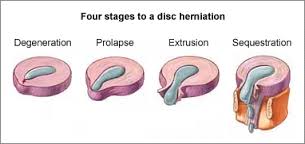
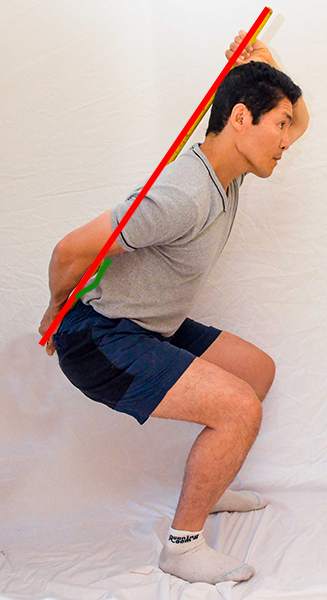


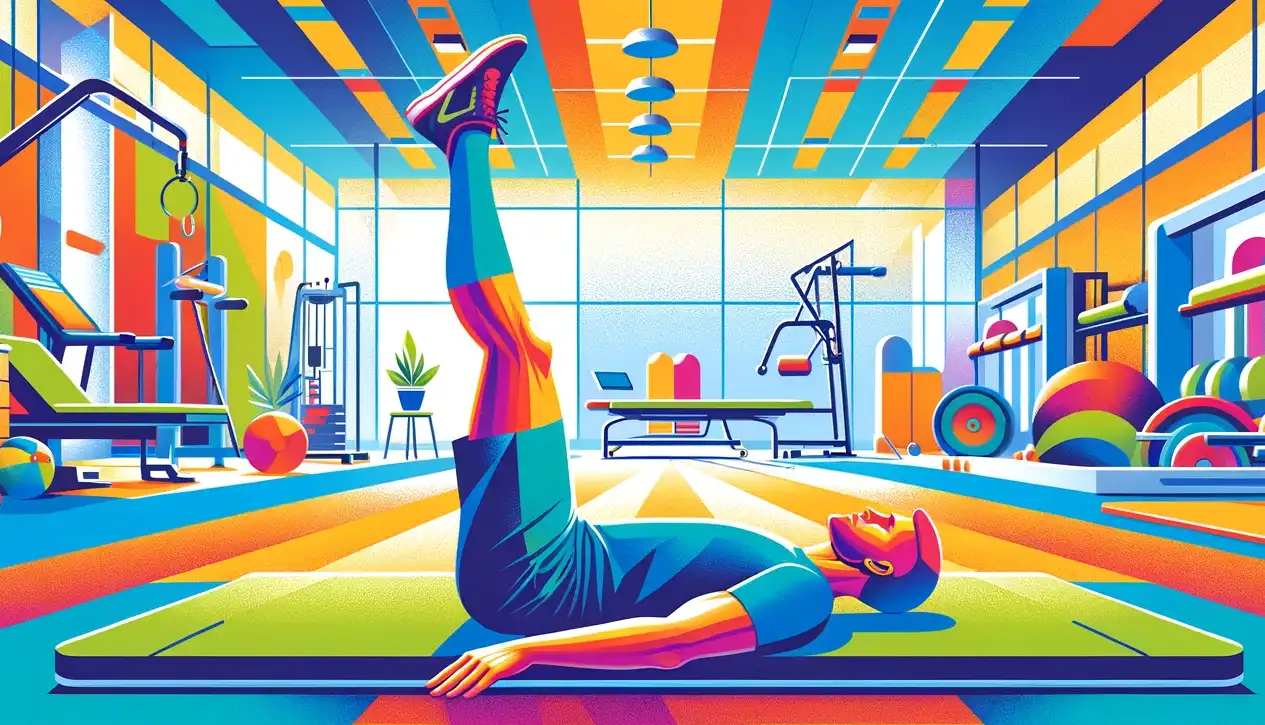
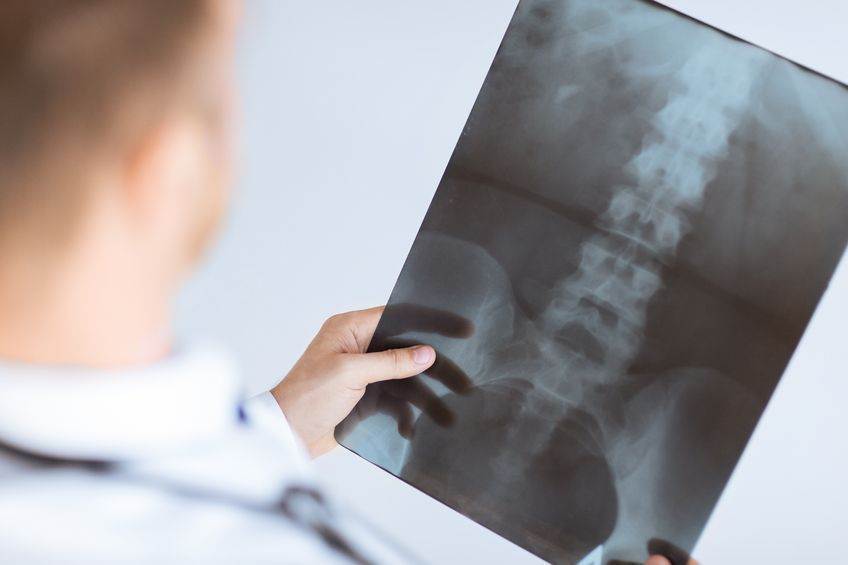
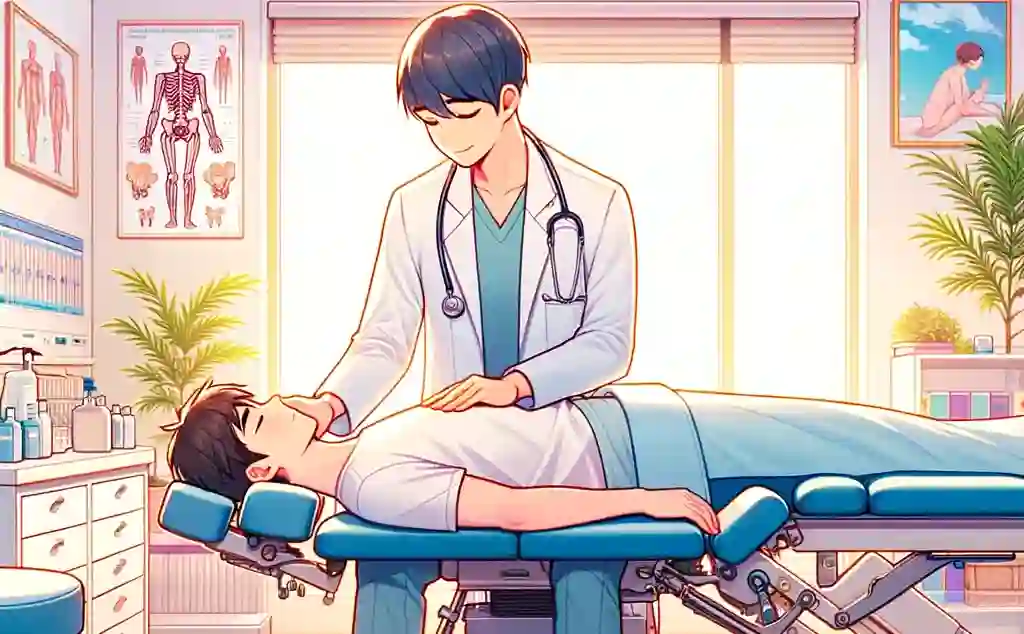
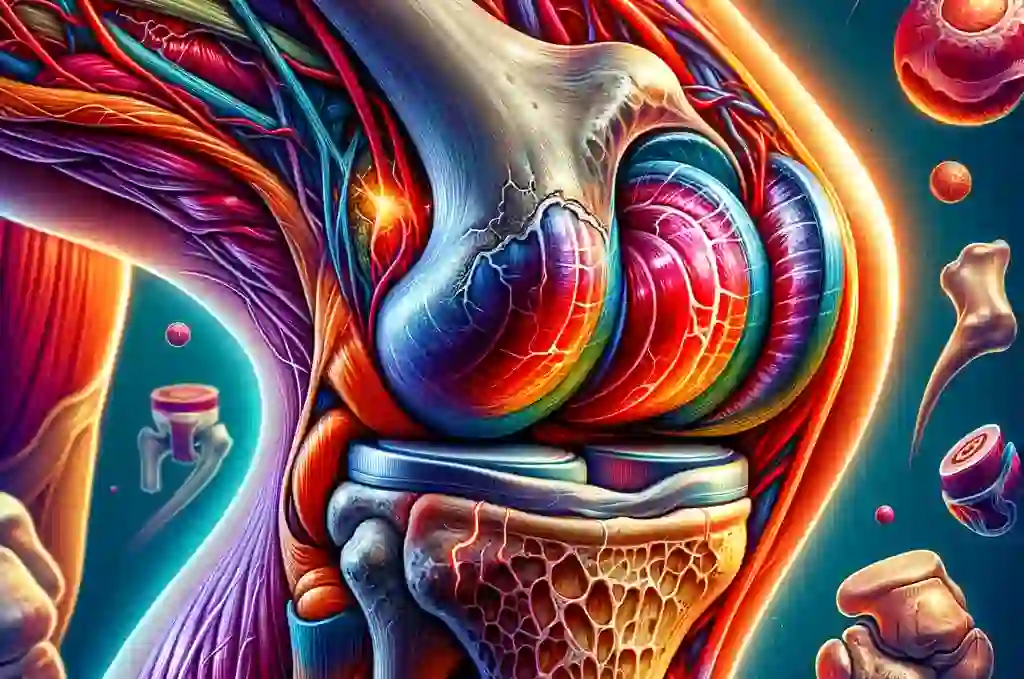
Hello Dr. Ken
I was diagnosed with a bulging disc at L5S1. I had the epidural injection a couple of weeks ago. I don’t think it helped though. I’m up walking but am dealing with sciatica right now. I’ve been doing the cobra and the pain is diminishing in the lower leg and moving to the left cheek. I do the cobra several times a day but sometimes I feel the sciatica pain after doing exercise. After resting a bit the pain is relieved. Again the pain is mostly in my left cheek. I do all the stretches in the morning. I’m starting to be able to stand longer as the pain in lower leg is not as much. So how many times a day should I do the Cobra? I feel that I am improving being that I am walking with no problem just pain in butt cheek. And should I also do the Bird Dog now or wait until the the sciatica is completely gone before I start that exercise. Thanks in advance.
Author
Thanks for your question Kev. You should so the Cobra 8 times a day for a set of 10-15. You should also do the bird dog 3-4 sets of 10. This is an opinion, not a recommendation. You should always consult your local chiropractor or physiotherapist.
Hope that helps your disc herniation.
Dr ken nakamura please can you help or advice I have had a slipped disc for 8 wks although pain is at a level that i can deal with I’m very worried about my thigh feels numb and week I cannot walk far and climbing stairs is very hard as leg will not support me so it takes ages my question is do you think the numbness will go as I’m very despondent and feel this is how I’m going to be now
Author
Thanks for your question Susan. You don’t need to be concerned so much about the numbness. What’s important is the weakness and pain. Numbness tends to be variable and will get better as long as the weakness (I am assuming that’s what you meant) and pain are getting better. Sound like the pain is better which is a good sign. You should check with your local practitioner to see if your strength is getting better with the treatment you are doing.
Hope that helps your disc herniation. The above is an opinion and not a recommendation. If you have any more questions for this downtown Toronto chiropractor I will do my best to give you a good answer.
ir, My name is Dharmendra Parekh and service as a banker my MRI Report says that “IMPRESSION”,
Diffuse disc bulge and right paracentral disc extrusion with slight inferior migration and bilaeral ligamentum flavum thickening with facetal arthrosis at L4-5 disc causing right lateral recess narrowing with compression over right traversing nerve root and abutting left traversing nerve root.
Mild diffuse disc bulge with broad based posterocentral right paracentral and right foraminal disc protrusion with bilateral ligamentum flavum thickening and facetal arthrosis at L5-S1 disc causing mild narrowing of right lateral recess and right neural exit foramen with indentation over right nerve root and abutting right exiting nerve root.
Spondylodisco degenerative changes of rest of lumber spine as described
Kindly advise me what to do as i have journey 200 kms daily through train,My pain is on right leg from knee to toe .even i can not sleep as my right leg pain whole the night. Please advise me. Thank
Author
Thanks for your question Dharmendra. You need to tell me more about your symptoms in detail especially what makes you worse.
Hi Dr. Nakamura,
By far the most informative material I’ve found on this matter. I have l4 l5 herniation and l5 s1 bulging, which is restricting the bowel after lifting weight. The bowel works fine if I don’t lift any weight, but even very light weight lifting (any exercise– chin ups, bench press, dips, squats, etc.) results in bowel restriction for a day or two. Seems likes the sphincter won’t open properly. After a few weeks of mainly the “bird dog” and “sphinx pose”, sciatica is gone and low back pain has improved greatly, but I am still experiencing the bowel restriction and worsening of low back pain after any attempt at light weight lifting. Do you have any specific recommendation for how I can improve this issue? Do you think the “bird dog” and “sphinx pose” will eventually help get me there? Thanks a great deal for your info and opinion.
Hi Dr. Ken Nakamara.
I am having severe back pain with the large herniation of disk for the last 7 month. Did try a lot of things and still doing a research. I am barely walking, can stand only for 5-7 mins of max. The pain radiates to left leg down to foot. I am totally disabled of doing anything at home. However, my leg is very much in pain, it is not weak. Neurosurgeon (of course) opts a surgery., which I am very scared of and don’t want to do. Started doing your recommended exercises.
Could you please advise how long it might take to come back to a normal life?
Thank you
Author
Thanks for your question Farzona. I can’t answer how long if will take to get back to normal life as you have a serious problem that is severe. My opinion is that lying face down for 5-10 minutes at a time 8 times a day maybe helfpul although it can make you worse. Also, you need to keep mobile and not stay in bed or the couch. Move from position to position like sitting to standing, to walking to lying down. Don’t lie on the couch. Being still all the time will make you worse. This is an opinion and not a recommendation.
Hope that helps your disc herniation. If you have any more questions for this downtown Toronto chiropractor I will do my best to answer your question.
Hi Dr. Ken,
I am a 22 year old female who competes in muay thai and 8 months ago I herniated my T3-4 disc, T8-9 disc, I have a bulging disc at L5-S1 and a fractured sternum. I was diagnosed today and have had chronic back pain for the past 8 months. Is physiotherapy the best option for all four issues? Are there specific exercises I could be doing to help relieve the pain? Is it possible to make a full come back and have a healthy back again or is this something I will live with forever?
Author
Thanks for your question Kayla. It’s a matter of how badly damaged these discs are as to whether you will make a full come back. Also, not all of those discs may be symptomatic. As for the sternum that will heal by itself. For the profession, a great chiropractor will just as much as the best physiotherapist in your area. Just pick the best person you can find, it’s not the profession.
Hope that helps your disc herniation.
Hello dr, i faced with disc herniation durind sit-up training three weeks ago. I want to know only one thing, how long will take till this herniation healing compeletly. And does dics herniation will be rehabilitated compeletly???
Thank you
Author
Thanks for your question Majid. Sit-ups are the perfect way to put out a disc. The US army eliminated sit-up from training and substantially decreased their incidence of lower back pain. So the first lesson I am sure that you have learned is not to do sit-ups.You can be pain free but not the same. The evidence shows that once you get lower back especially disc herniations you it is recurrent. This means it will happen again from time to time. How long will it take? You haven’t been examined by me so I cannot tell you. I know people that have pain for years and others that come to the clinic that get better within days. Others take weeks.
The question is depend on hundreds of factors. For example you can get the best physiotherapy or best chiropractic treatment but you can quickly make it worse again. Nothing wrong with the treatment but if you continue to aggravate the problem say by sitting all day with no breaks you won’t get any better, no matter what the treatment including surgery.
So I cannot give you a timeline as I need to examine you first.
Hope that helps your disc herniation.
hello dr
i have recently experienced lower back pain problem and under medications but none of these medicines helped me yet. I undergone MRI and the result is this:
mild diffuse bulge of L5-S1 IV disc indenting thecal sac and mild left neural foraminal narrowing
what does this and how can i get treated.
thank you
I delivered my second child two months ago. Mid-pregnancy I experienced back pain. I saw a physio and their best diagnosis was pelvis pain. The last two months of my pregnancy however I experienced horrible sciatic pain in my right leg. I couldn’t walk, sit or stand for more than a minute without laying down. My OBGYN assumed my pain was normal pregnancy related pain although I knew it wasn’t. I couldn’t take any pain meds. It was the worst time of my life. I’m 34. I had my baby at 40 weeks vaginally. After I couldn’t walk at all with severe leg pain. They have me morphine followed by naproxen and other breast feeding safe drugs. I had to nurse my baby laying down because I couldn’t do it any other way. My OB ordered a MRI on hospital (I live in Canada). It showed a large right paracentral disc protrusion at L5 S1 with nerve compression. Because I had a newborn and two year old they sent me priority for a steroid injection. I don’t think it did much. I started physiotherapy and they followed the Mackenzie protocol. To date I am much better. The leg pain has mainly subsided for a few weeks. Now and then I need to rest when I feel some dull pain in sections of my leg. But my concern is the continued tingling in my foot (heel and little toes), absent ankle reflex, and numb calf. I went from being able to do no calf raises to six. Unjust started lifting my baby. I currently have intense pain in my sacrum and hip on the right side. I physically can’t do the laying down periformsis stretch because of the pain in my sacrum. I had a consult with a surgeon and although he would do the surgery, he recommends I wait and see. I’m struggling so much with the injury and trying to raise my kids. I don’t know where to go from here in terms of treatment. I am seeing as osteopath this weekend. Do you think my nerve is still compressed, hence the foot issue? Will i ever get better? Any other treatment recommendations?
Author
Thanks for your question Andrea. While it is concerning that you have numbness and tingling it is the pain that is more important. Since the pain is better than you can function better. The tingling and numbness are something that usually takes time. Weeks to months sometimes you are left with some tingling. As long as you can do your everyday things that is the most important.
Yes the nerve is compressed. I would say carry on with the treatment you are already doing as you have gotten substantially better. If you plateau and can’t go forward than you can think about other treatments. This is an opinion and not a recommendation.
Hope that helps your disc herniation.
I had the same experience with my second child. I ended up having a discectomy after a year and a half of intermittent excruciating pain and constant tingling. I did the steroid injections, PT, chiropractor, everything. The surgery gave me tremendous relief from the nerve pain. I walked out the day of surgery when I couldn’t walk in. Also, Gabapentin is an absolute life saver for me. I still have tingling and jolts and the gabapebtin tamesbit enough to raise my kids and stay active. I was doing yoga and overdid it about 2 months ago, now the disc above the one I had surgery on is compressing the nerve and causing sciatica on the other leg. I’m trying amsteroid injectors again. My Dr said a person more likely to herniated a disc above or below the previous herniation after an initial herniation. I’m trying so hard to stay optimistic, going back to eliminating extra salt, sugar, caffeine, doing my PT recommended stretches and exercises again. I’m praying this isn’t just how the rest of life will be. I hope you find your cure. My heart sincerely goes out to you!
Thank you for the section. I just had my 2nd back surgery. A microdiscectomy L4/L5. I felt extremely better for 3 weeks straight and now I feel worse than I did before the surgery. Pain down my leg and numbness, tingling (no weakness though). I wass so optomistic after feeling relief after surgery. My surgeon said I may have reruptured. He told me to lay in bed, and go do aqua therapy. I can barely walk I am in so much pain. Is there any hope for someone like myself? I am only 35. History of “soft cartliage” in my genetics according to surgeon. Thank you for your time.
This is exactly my situation to a t!! I had my second back surgery, the first being a diskectomy at L4L5 and L5S1 in 2011. Felt immediate relief in the left lower leg pain and weakness. Tough recovery bc it was a large open surgery but I went back to work in 5 weeks. This time, had a huge extrusion at L4L5 and small at L5S1. Did well until I traveled and was doing long periods of sitting and lifting heavy suitcases and walking a ton. By my flight home I was in agony and in tears walking through the airport….I tried to do my job as a sonographer for a little over a week and the pain became so unbearable the doc I worked for contacted a local neurosurgeon to see what we could do for me. I was in the hospital for 5 days, the first of which were spent in a daze bc they did NOT want to do surgery on me and they attempted an epidural injection under CT which never worked for me and it made my pain so severe I couldn’t walk at all. So they finally decided to do the surgery, they did it minimally invasive and now I’m told he just took out enough scar tissue and disc pieces to relieve the nerve. Apparently it was so inflamed it was not like my other surgery where I had immediate relief in my leg. I woke up in agony and my leg was such a hot mess that they had to bring a walker and bedside commode. After two days I finally started to feel some relief! From there on I was on a roll and got better amazingly every day. I felt more amazing than I had in a long time. At my follow up for suture removal they informed me I was to start gentle PT for scar tissue formation and then later in recovery I would do water therapy because I was told I have a totally lax spine and genetically I am prone to these issues for life unless I do things to prevent it . well this person they sent me to decided he wanted to go hard and fast and didn’t agree with what the doctor said….the first session was okay but about 3 days after the second session which was about 3 weeks out from surgery, I woke up in agony again. It got increasingly worse. So now I am in the same or worse position than I was. And they are acting all blase like oh it will get better with time! Like this is the whole reason I had surgery! I need to work to support my family and I can barely move now. So I started aqua therapy and steroids and am hoping for the best but feeling and fearing the worst. I am insisting on a repeat MRI which is scheduled for Monday unless have a miraculous recovery over the weekend! I really feel your pain and I want to know how to fix this asap!! I am terrified I am just on a downward spiral and I will have no true relief! I can’t believe this has happened and I feel totally for you as I am in such a similar state! How do we go on and make this liveable and cured??!??
Author
Thanks for your question Nechelle. Sorry to hear about your failed back surgery. Unfortunately, cases like yours are common. You can try to do these exercises https://www.bodiempowerment.com/herniated-disc-part-2-the-best-exercises-for-your-herniated-disc/
However, at this point, they will likely make you worse. Better to go to the best chiropractor in your city. Yes I agree, it sounds like you likely herniated your disc again. I don’t recommend this but many of my Indian patients have been recommended complete bed rest. While it’s not proven in research some have fared better. None are cured but the claim to be better. It’s possible that the research has only looked at bed rest for shorter periods of time vs bed for extended periods like two months. This is an opinion, not a recommendation.
Hope that helps your disc herniation.
I am so impressed with your advice and site and I have been following and reading up. Would you please be able to help me with some advice.
My problem is, I have a bulging disc at L5 S1, it fully bulged in July 2016, had symptoms prior to of a very sore and achy left calf and foot going tingly/numb. I had the nerve test done, shows no damage. I have seen a Rheumatologist, said I have no stenosis or AI. I have done 2 epidurals (helped a bit yes.) I am no longer in pain. I have done a steroid injection in my pyriformis, as I present symptoms of this as well.
What I have now is almost constant tingling in foot and tightness in lower calf causing muscle spasm there. It’s annoyingly tight. And get’s sore. As well, sometimes my sacrum area feels tight/sore. Periodically, when i sit, my left butt cheek can feel a bit numb but it goes away when I move. I am guessing the bulge is still healing? So the L5 S1 can cause the butt cheek and soreness?
I was told I have plantar fasciitis in my left foot. Could this cause the numbing/tingling in my foot? Like the L5 S1 is really not part of the picture? I am scheduled to have an injection done in my calf and/or foot.
I don’t want more epidurals in back. But the foot/calf get’s painful and bothersome, so thinking i will try.
Thank you so much. You are incredible to answer all our questions.
Author
Thanks for your question Rena. First, it sounds like you are simply covering up your pain with the 3 injections. It doesn’t sound like you actually addressed the problem. You will find out as these injections like steroids will last from a couple of weeks to 6 months. If it comes back then you know it was a band-aid. If the pain doesn’t come back then it might have healed.
My thought is that you likely still have pressure on the disc with pressure on the nerve root. You may have plantar fasciitis along with this problem in the lower back, but is is very doubtful that it is causing the tingling and numbness of the foot. Your foot numbness and tingling are likely from the lower back.
Hope that helps your disc herniation.
Hi
i am software employee daily working 10 hours a day I have been suffering from low back pain from since 2 months that time pains are wrost can’t express . now I have taken completely bed rest for 2 months taken medications
recently new MRI report showin below
1. diffuse disk bulge with a left paracentral protrusions at the L2-L3 disk impinging on the thecal sac and narrowing lateral recesses(L>R) mildly compressing the nerve root canals,focal canal stenosis is seen at this site
2. asymmetric diffuse bulges at L4-L5 level causing mild thecal sec,indentation ,compression of the lateral recess and nerve root cancal(L>R)
3. Right L5-S1 facet joint changes are seen .
Now I am able to walk some times very small pains in Knee when walking the pain will goes off after 2 mins
even when I am tensed some time observing small pains .
can you please let me know best excercises .
now I am strted to office sitting 8- 9 hours .in mid moving my body left-right standing moving body front to back .only observing little pain when sitting
can you please advice me is it goes anything wrong by sitting
Author
Thanks for your question Jyotshna. From my point of view, bedrest is wrong as the research doesn’t validate it seems that is the standard of care in India and nowhere else in the world that I am aware of yet. However, there are some patients that seem to better. In your case, it doesn’t sound like it helped enough.
You need to tell me a lot more about your symptoms for me to give you any exercises.
What are your feeling regarding ballroom dancing. I have been ballroom dancing for over 10 years now. I wear 3 inch heels and recently i have injured my lower back. Would you suggest to stop or possibly not wear heels. I have a strong passion for this sport and would love to continue.
Author
Thanks for your question Christine. I think ballroom dancing is great with heels for the lower back unless you have a different type of disc herniation compared to the typical posterior lateral herniation. If you have a typical disc herniation than once you are rehabilitated then you should do fine.
You can try these exercises.
https://www.bodiempowerment.com/herniated-disc-part-2-the-best-exercises-for-your-herniated-disc/
Remember you can get worse with exercises. If the pain starts going further down the leg or the back pain gets worse than you should immediately stop the exercises. This is an opinion a not a recommendation.
Hope that helps your disc herniation.
I have L3, L4, L5 disc’s bulging out and trapping the nerve’s in my lower back, 5 being the worst according to the Doctor. The problem i’m having at the moment is the muscle’s in my lower back keep going into spasm and i can barely walk, struggle to get up once i am sat down. Please could you give me some advice on what to do, and also if i went to see a Chiropractor would they be able to help? Thank you
Author
Thanks for your question Lyn. Sounds like you have are having an acute problem with your lower back. It’s really the skill of the person that determines if they can help or not. The profession chiropractor or physiotherapist does not matter. Either one can potentially make you better or worse. That is why you should find the best chiropractor or best physiotherapist in your area. This is an opinion and not a recommendation.
Hope that helps your possible disc herniation.
You’re a GREAT Man.
JC
Author
Thanks for your great comment. Hope that helps your disc herniation.
Hello and I hope you are well and maybe help me
Actually ,forget the maybe as I would not be here otherwise on a sunday night at 11.40 pm.
I have had a micro discectomy in 2007,l4/l5 seems very common.
Now I`ve reached breaking point,
I hear and see all different things that could help me but I am so confused.
My parents have died recently,tried jobs,tried reflecology,yoga,pilates,reiki,chiropracters,u name it,good chance I`ve tried it.
I am in pain from when I awake and wish when I do I was still asleep.
Painkillers from gp is all they offer and occasional physio and maybe 1 acupuncture.
I is nearing 1s wits end and would love some feedback and reassurance.
Roger from Wolverhampton.UK
Author
Thanks for your question Roger. I will give you an opinion and not a recommendation. You can do these exercises. https://www.bodiempowerment.com/herniated-disc-part-2-the-best-exercises-for-your-herniated-disc/
You may get worse with the exercises. So you know you are getting worse if the pain, numbness or tingling goes further down the leg or the above symptoms increases. If you get worse you should stop right away. These exercises should be supervised by a chiropractor or a physiotherapist in your case due to the probability that you will need the exercises customized to suit your body.
Hope that helps your disc herniation.
Hey…thank you for the article its very helpful. I have a herniated disc in my L4 and L5-S1 lower back. The pain has already reached my right leg…in the knees and ankle. I am a student and need to sit for long hours. what should my posture be while sitting ? should the back of the chair be straight or curved ? should it cushioned?
I don’t want to sit in a wrong way and make it worse.
Author
Thanks for your question Mathur.
1. The back of the chair curved is generally better. But with almost any chair using a lumbar support roll is almost always better with the exception of great chairs.
2. Cushioning is generally better.
Hope that helps your disc herniation.
Can you speak a bit about the advantages and/or disadvantages of inversion table?
Author
Thanks for your question Darian. Inversion tables seem to help some people with some lower back pain. Most of the time though I find that exercises that you can do at home usually more effective than the table. This is based on numerous patients that have inversion tables that come to me as things aren’t working out the way they thought. Often I give them some treatment and exercises and the vast majority of the times they get better. However, if you don’t have someone in your area that can customise exercises for you then you may be better off with an inversion table.
Hope that helps your disc herniation.
Thank you very much for sharing your knowledge so generously. I have been dealing with a bulging disc for 12 years, and have found that, along with chiropractic, proper education is the best treatment. I’ll incorporate these exercises immediately!
Sincerely,
Darian
Author
You are welcome Darian. Hope that helps your disc herniation.
I have bad knees to bend the way you suggest here hurts. Do you have any other suggestions?
Author
Thanks for your question Ronald. You can try these exercises here: https://www.bodiempowerment.com/herniated-disc-part-2-the-best-exercises-for-your-herniated-disc/
This is an opinion and not a recommendation.
Hope that helps your disc herniation.
hey doc..
I have read your article and comments below in detail . I had L4 disc herniation 3 months ago. Now I am moving, walking around and feeling much better and pain free. I also do some of the exercises you mentioned in Disc herniation part 2. Now my question is should I have to do these exercises for some time like 1 month , 6 months etc or for whole life ?
Also I was doing Gym at that time , and now can I join Gym again and run on treadmill ? Can I run easily or not?
I have read in comments you advised not to do dead lifts,rows, bent over rows and squats etc . Should I avoid these kind of exercises for some time or for whole life ?
Author
Thanks for your questions Salman. I will give you my opinion, not a recommendation.
1. You should do the exercises for 6 more weeks.
2. You can join the gym and run
3. You can do all the exercises if you do them properly. From my observations though the above exercises are done wrong by the vast majority of people or they lift too much weight. I would avoid those exercises altogether if I were you.
Hope that helps your disc herniation.
Sir my name is Mahesh and age is 37 from India.My MRI report shows
Posterior… left paracentral extrusion of L5-S1 intervertebral disc indenting theca sac, causing lateral canal stenosisand left sided nerve root compression. Size is 8mm.
Posterior protrusion of L4-L5 intervertebral disc with annular tear at right foraminal level indenting thecal sac and abutting bilateral traversing nerve roots.
Sir. Doctor says to do surgery and I am not to do that what can i do to relieve pain.
Author
Thanks for your question Mahesh. There is no way to tell you if the case is surgical when you only write about your MRI. Maybe you have no symptoms maybe you cannot walk. Details, details, details are needed. If your history of symptoms is not detailed enough I won’t be able to give you an opinion.
Good luck with your disc herniation.